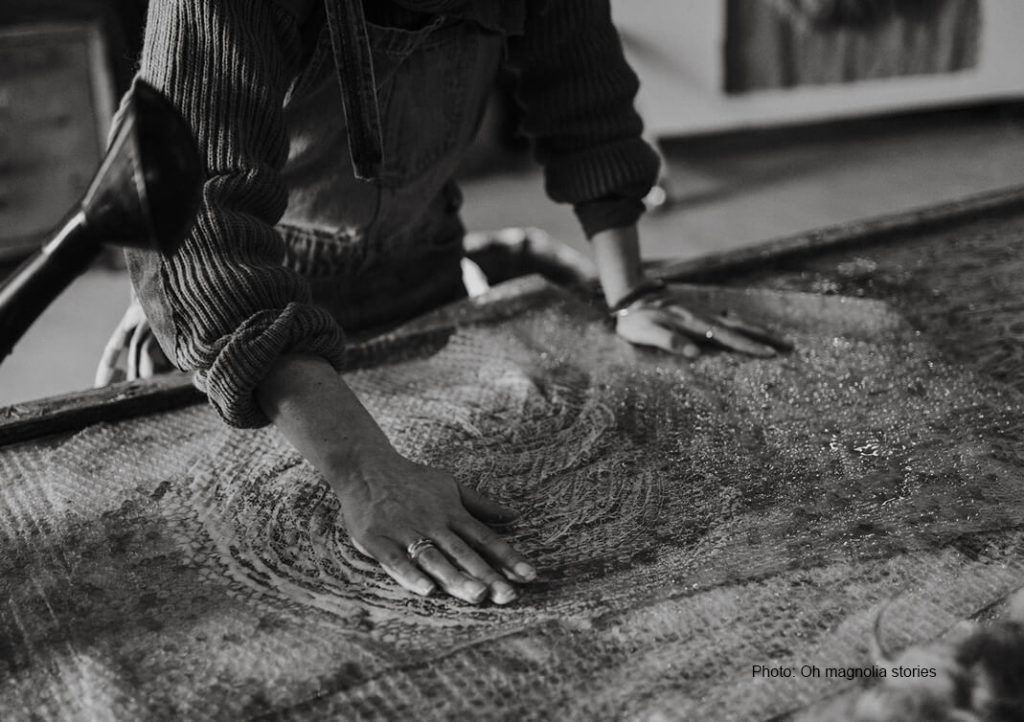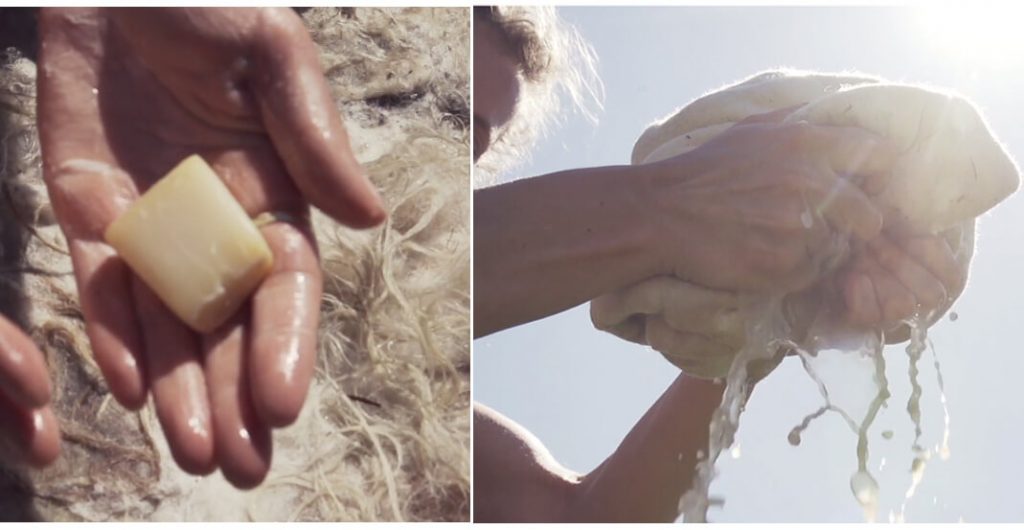Wet felting
The technique I use for making the Halona wool wall hangings is called felting. Felting can be dry or wet. For large surfaces, such as the woolen wall hangings, use wet felting

The felting process
Wet felting is a technique with which you can make a piece of fabric, or in this case a wool wall hanging, from loose pieces of wool. First, loose pieces of wool are laid over and next to each other, the design.
Wet felting is everything you don’t want in the washing machine with your wool fabric; warm water, soap and friction. The wool fibers respond to these three elements; they will shrink slightly and hook together. When you look at a wool hair under the microscope, you see hooks on the fiber. These hooks will intertwine by felting. All loose tufts of wool ‘hook’ together by wet felting and then form one whole. The result is called felt, the process that the wool undergoes felting.
After the design, hot water is poured over the design. Then I rub the design with green soap for a very long time, hours. By means of plastic bubbles of foil on and under the design, extra friction is created.
After rubbing, if the design is slightly felted, the entire design is rolled up. And is rolled with it for hours; the wool now gets a lot of rubbing from all sides and will start to felt.

Meditation
The wet felting process is very traditional. I often think of the women in faraway countries who spend hours washing together at the laundry. The felting of wool is like meditation because you are concerned with the now and your senses; under your hands you can feel the wool go from small and loose to firm and together.
Felting history
Felt was probably the first form of textile that man made, so before weaving and knitting. The oldest preserved remains of felt date back to about 6500 BC and were found in Asia.

See the short Halona movie below for the whole process.

1 comment
Comments are closed.